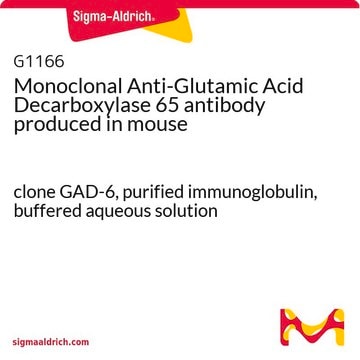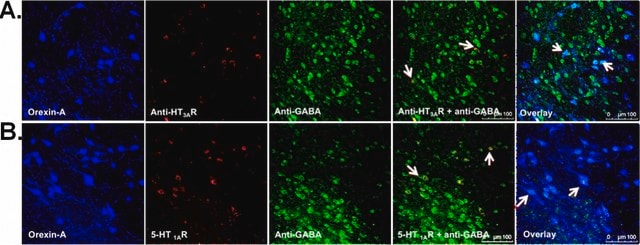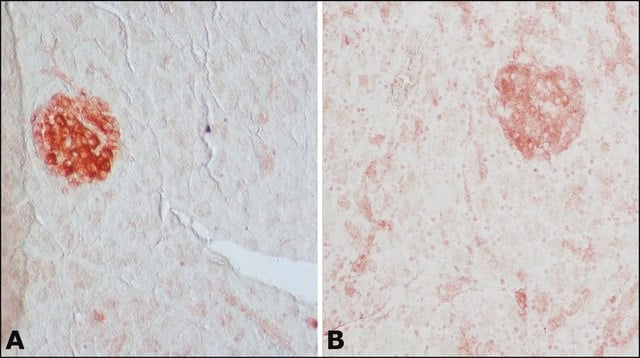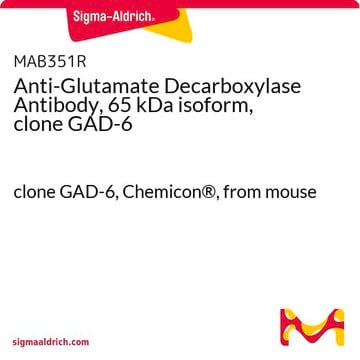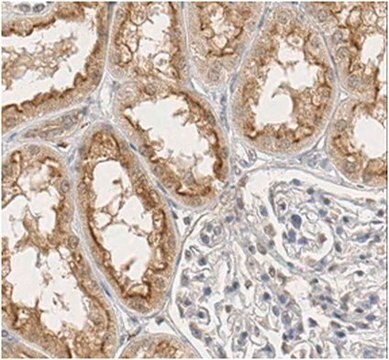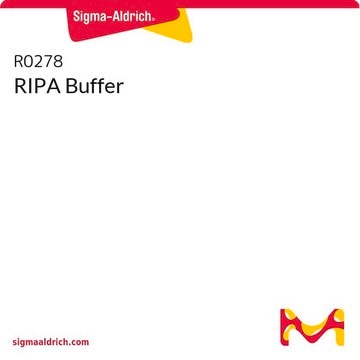MAB351
Anti-GAD2(GAD67) Antibody
CHEMICON®, mouse monoclonal, GAD-6
Sinónimos:
GAD65
Seleccione un Tamaño
731,00 €
Seleccione un Tamaño
About This Item
731,00 €
Productos recomendados
Nombre del producto
Anti-Glutamate Decarboxylase Antibody, 65 kDa isoform, clone GAD-6, clone GAD-6, Chemicon®, from mouse
origen biológico
mouse
Nivel de calidad
forma del anticuerpo
purified immunoglobulin
tipo de anticuerpo
primary antibodies
clon
GAD-6, monoclonal
reactividad de especies
rat, human
fabricante / nombre comercial
Chemicon®
técnicas
immunohistochemistry: suitable
western blot: suitable
isotipo
IgG2a
Nº de acceso NCBI
Nº de acceso UniProt
Condiciones de envío
dry ice
modificación del objetivo postraduccional
unmodified
Información sobre el gen
human ... GAD2(2572)
Descripción general
Especificidad
Inmunógeno
Aplicación
Western blot
Optimal working dilutions must be determined by end user.
APPLICATION NOTES FOR MAB351
IMMUNOHISTOCHEMISTRY
1) Perfuse rats with 100 mM phosphate buffer, pH 7.4 containing 1% paraformaldehyde, 0.34% L-lysine and 0.05% m-periodate (1% PLP).
2) Postfix brains in 1% PLP for 1-2 hours.
3) Transfer brains to 100 mM phosphate buffer containing 30% sucrose and gently agitate on a shaker platform at +4°C for 48-60 hours.
4) Using a sliding microtome, cut 30 mm sections of frozen cerebellum. As the sections are cut, collect them in a vial of cold 100 mM phosphate buffer.
5) Incubate sections in PBS containing 1.5% normal serum and 0.2% Triton X-100 for 30 minutes.
6) On a shaker platform, incubate sections with MAB351 (diluted 1 μg/mL in PBS containing 1.5% normal serum and 0.2% Triton X-100) for 12-36 hours at +4°C.
7) On a shaker platform, rinse sections eight times, 10-15 minutes per rinse, in PBS.
8) Detect with standard secondary antibody detection system (PAP, ABC, etc.).
9) Mount sections, dehydrate, and apply coverslips.
Neuroscience
Neurotransmitters & Receptors
Descripción de destino
Forma física
Almacenamiento y estabilidad
Nota de análisis
Rat brain tissue
human brain lysate
Otras notas
Información legal
Cláusula de descargo de responsabilidad
¿No encuentra el producto adecuado?
Pruebe nuestro Herramienta de selección de productos.
Opcional
Palabra de señalización
Warning
Frases de peligro
Consejos de prudencia
Clasificaciones de peligro
Acute Tox. 4 Dermal - Acute Tox. 4 Inhalation - Acute Tox. 4 Oral - Aquatic Chronic 3
Código de clase de almacenamiento
13 - Non Combustible Solids
Clase de riesgo para el agua (WGK)
WGK 3
Punto de inflamabilidad (°F)
Not applicable
Punto de inflamabilidad (°C)
Not applicable
Certificados de análisis (COA)
Busque Certificados de análisis (COA) introduciendo el número de lote del producto. Los números de lote se encuentran en la etiqueta del producto después de las palabras «Lot» o «Batch»
¿Ya tiene este producto?
Encuentre la documentación para los productos que ha comprado recientemente en la Biblioteca de documentos.
Filtros activos
Nuestro equipo de científicos tiene experiencia en todas las áreas de investigación: Ciencias de la vida, Ciencia de los materiales, Síntesis química, Cromatografía, Analítica y muchas otras.
Póngase en contacto con el Servicio técnico



